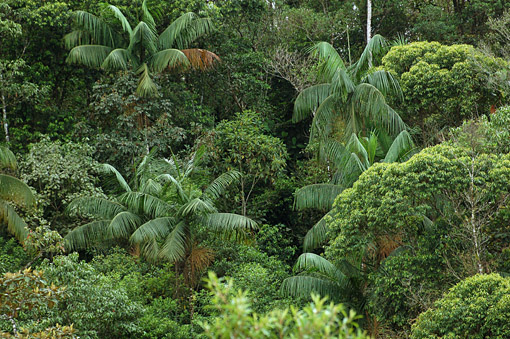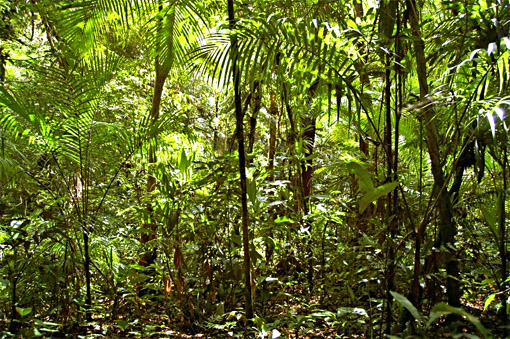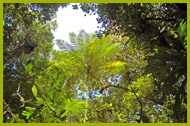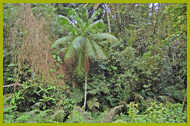|
|
|
|
|
|
Ecological aspects
|
|
|
|
Climate
|
|
|
|
|
|
The species has been considered a shadow loving rain forest (umbrófila, esciófila) species (YAMAZOE 1973, KLEIN 1974), or at least a species that is well adapted to conditions of low light (BOVI et al. 1987), occurring within different plant associations that provide shade (PAULILO 2000). The species occurs in regions with an average annual rainfall between 1000 mm and 2200 mm, presenting a better development with a uniformly distributed rainfall exceeding 1500 mm (CARVALHO 1993). It also occurs in regions with well-defined weather seasons, like in southern
Bahia
and the south of Mato Grosso do Sul, tolerating a dry season with light and water deficit up to three months. The average annual temperature of the areas where E. edulis occurs varies between 17 º C and 26 º C, with an average temperature of the coldest months of 13 º C to 24 º C, tolerating regions with up to seven frosts and an annual average temperature of the warmest month of 20 º C to 27 º C (CARVALHO 1993). The climate types (Köppen) of occurrence are: Af, Am, Aw, Cfa, Cwa, Cwb.
|
|
|
|
|

|
|
|
|
View on a forest site with a high density of E. edulis
|
|
|
|
Soil
|
|
|
|
|
|
E. edulis commonly occurs in fertile to low fertile, good to regulate drained soils, with a sandy and clayey texture. The soils in which the plant adapts better are ARGISSOLO, LATOSSOLO, NEOSSOLO QUARTZARÊNICO and NITOSSOLO. The lack of water as well as soppy soils and sandy or soils with heavy clay is detrimental to the development of the species.
|
|
|
|
 |
|
|
View on a forest site with a high density of E. edulis
|
|
|
Phytosociology
|
|
|
|
The density of individuals in a community is very diverse, since the process of seed dispersal concentrates the seeds close to the stock plant, but also in a manner of diluted distributing in the whole area of occurrence (REIS & KAGEYAMA 2000).
Studies in two gallery forests of the
Federal District
point to E. edulis as a species, occupying the 52th and 79th place of 126 and 150 species respectively (SAMPAIO et al. 2000).
In phytosociological investigations of Ombrophilous Dense Forests in Santa Catarina E. edulis appears as a species of higher density (REIS & KAGEYAMA 2000). Own studies in the same vegetation type show that the plant do not occur in young dense forest stages (3-15 years), while in older stages (> 35 years) an average of 190 – 490 plants in total were registered, of which 15-19% (advance stages 35-50 years) and respectively 32-41% (old forest stages > 80 years) were adult plants. Thus E. edulis serves as indicator species that divides a medium (10-15 years) forest stage from the advanced forest stages.
|
|
|
|
|
|
|
|



